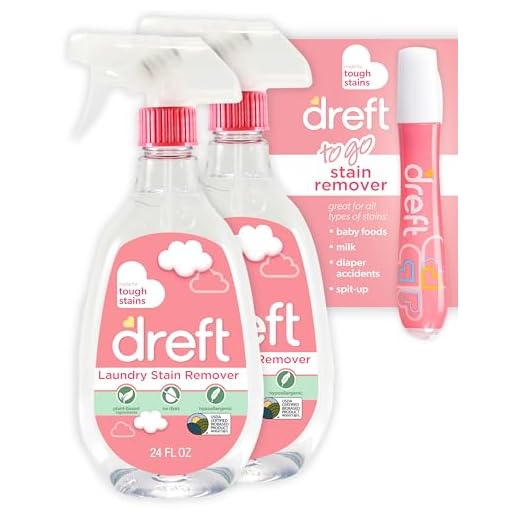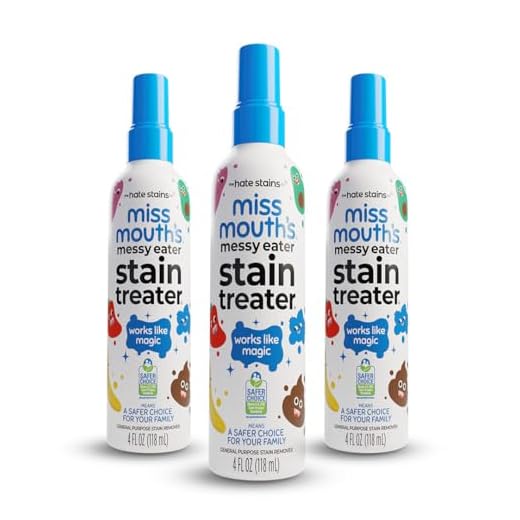








Begin by scraping away any solid matter using a plastic spatula or an old credit card. This prevents further smearing into the fabric. Be gentle to avoid damaging the material. Once the bulk is removed, it’s time to tackle the stain.
Mix a solution of cold water and a mild detergent in a spray bottle. Spray the affected area generously, ensuring the liquid penetrates the fibres. Allow it to sit for about five minutes to break down any lingering residue. After this, blot the area with a clean, white cloth, absorbing the moisture and stain. Repeat this process as necessary until the mark is gone.
For persistent odours, a sprinkle of baking soda can work wonders. Let it sit for at least 30 minutes before vacuuming it up. This not only neutralises smells but also refreshes the fabric. Finally, wash the blanket according to its care label, preferably in cold water, and air dry it to avoid setting any remaining stains.
Steps to Remove Stains and Odours
Begin by scraping off any solid remnants with a plastic spatula or a similar tool. This prevents pushing the material deeper into the fabric. Next, blot the stained area with paper towels, absorbing as much moisture as possible without rubbing.
Prepare a solution by mixing one tablespoon of liquid dish soap with two cups of cold water. Use a clean cloth to apply this mixture to the affected spot. Dab gently, working from the outside towards the centre to prevent spreading. Rinse the area with a cloth dampened in cold water to remove soap residue.
If any scent lingers, combine one part white vinegar with one part water in a spray bottle. Lightly mist the area and allow it to sit for about 10 minutes before blotting with a dry towel.
For persistent stains, sprinkle baking soda over the clean area after it has dried. Let it sit for several hours or overnight to absorb any remaining odour. Vacuum the area thoroughly to remove the powder.
Always check the care label of the fabric before using any cleaning agents. If machine washing is an option, use a gentle cycle with a suitable detergent, ensuring the item is completely dry afterwards to prevent mildew.
Gather Necessary Cleaning Supplies
First things first, assemble your toolkit for the task ahead. Having the right items on hand can make this process a breeze. Here’s a straightforward list:
| Item | Purpose |
|---|---|
| Gloves | Keep your hands clean and protected. |
| Paper towels | For initial blotting and removal of solids. |
| Stain remover | Break down any remaining stains and odours. |
| Spray bottle | For diluting cleaning solutions. |
| Warm water | Helps in loosening and lifting residues. |
| Vacuum cleaner | To ensure any particles are fully removed. |
With these tools ready, you’re set to tackle the situation efficiently. If you want to ensure your furry friend stays healthy, consider exploring the best dog food for blue heelers. A good diet can lead to less mess overall!
Remove Solid Waste from the Blanket
First, put on a pair of disposable gloves. This protects your hands from any bacteria and makes the process hygienic. Using a plastic bag, gently scoop up the bulk of the waste. Be cautious not to apply too much pressure, as this can push residues deeper into the fabric.
Use a Spatula or Cardboard
If the waste is stubborn, a spatula or a piece of cardboard can help. Slide it underneath the solid matter and lift it away without spreading it. Dispose of the collected material in a sealed bag to prevent odours.
Blotting the Area
After removing the bulk, take a clean cloth or paper towel to blot the area. Make sure to dab, not rub. Rubbing can worsen stains and push residue into the fibres. Use cold water to dampen the cloth, as hot water can set stains.
- Blot gently until the area is less soiled.
- Change the cloth as it becomes soiled to avoid transferring waste back onto the fabric.
Once the majority is removed, let it air dry before proceeding with further treatments. This helps avoid any lingering odours.
Treat Stains and Odours with Cleaning Solutions
For tackling stubborn discolourations and lingering smells, a targeted solution works wonders. Mix equal parts white vinegar and water in a spray bottle. This combination neutralises odours effectively. Spray the affected area and let it sit for about 10 minutes before blotting with a clean cloth.
For more persistent stains, a paste made from baking soda and water can be quite handy. Apply it directly to the mark, let it dry, and then vacuum it up. This technique absorbs both the stain and any remaining odour.
Enzymatic cleaners specifically designed for organic matter are also excellent. They break down the substances causing the stain and scent. Follow the instructions on the label for best results. Always test a small area first to ensure it won’t damage the fabric.
After treating, it’s beneficial to rinse the area with cold water and blot it dry. This helps remove any residue from the cleaning agents. If the fabric allows, air drying in sunlight can also help reduce any residual odours.
Regular maintenance is key. Consider washing the blanket every few weeks with a suitable detergent to keep it fresh and free from lingering smells. A quick shake and airing out can also do wonders between washes.
Wash and Dry the Blanket Properly
Use a washing machine with a heavy-duty cycle for the best results. Select a temperature setting of at least 60°C to ensure all residues are eliminated. For added freshness, consider adding a cup of white vinegar during the rinse cycle; it helps neutralise lingering smells.
Detergents and Extras
Choose a detergent designed for tough stains or one that is eco-friendly if you’re concerned about chemicals. If your pet has sensitive skin, opt for hypoallergenic options. For extra cleaning power, adding baking soda can enhance the detergent’s effectiveness.
Drying Techniques
After washing, tumble dry the fabric on a medium heat setting. Adding dryer balls can help fluff the material and reduce drying time. If the weather permits, air drying outside can also be beneficial, as sunlight acts as a natural disinfectant. Just ensure the blanket is completely dry to prevent mildew.







